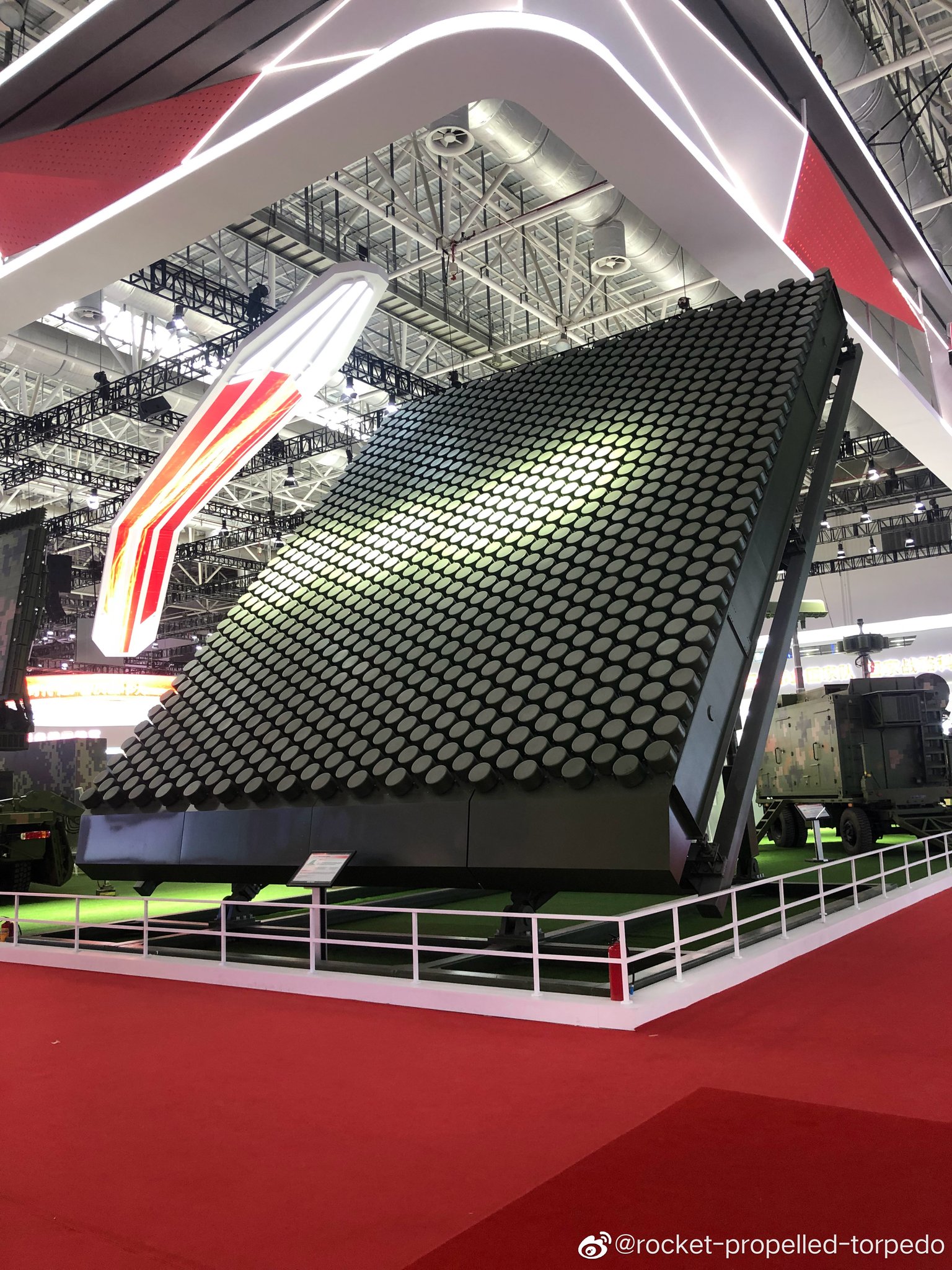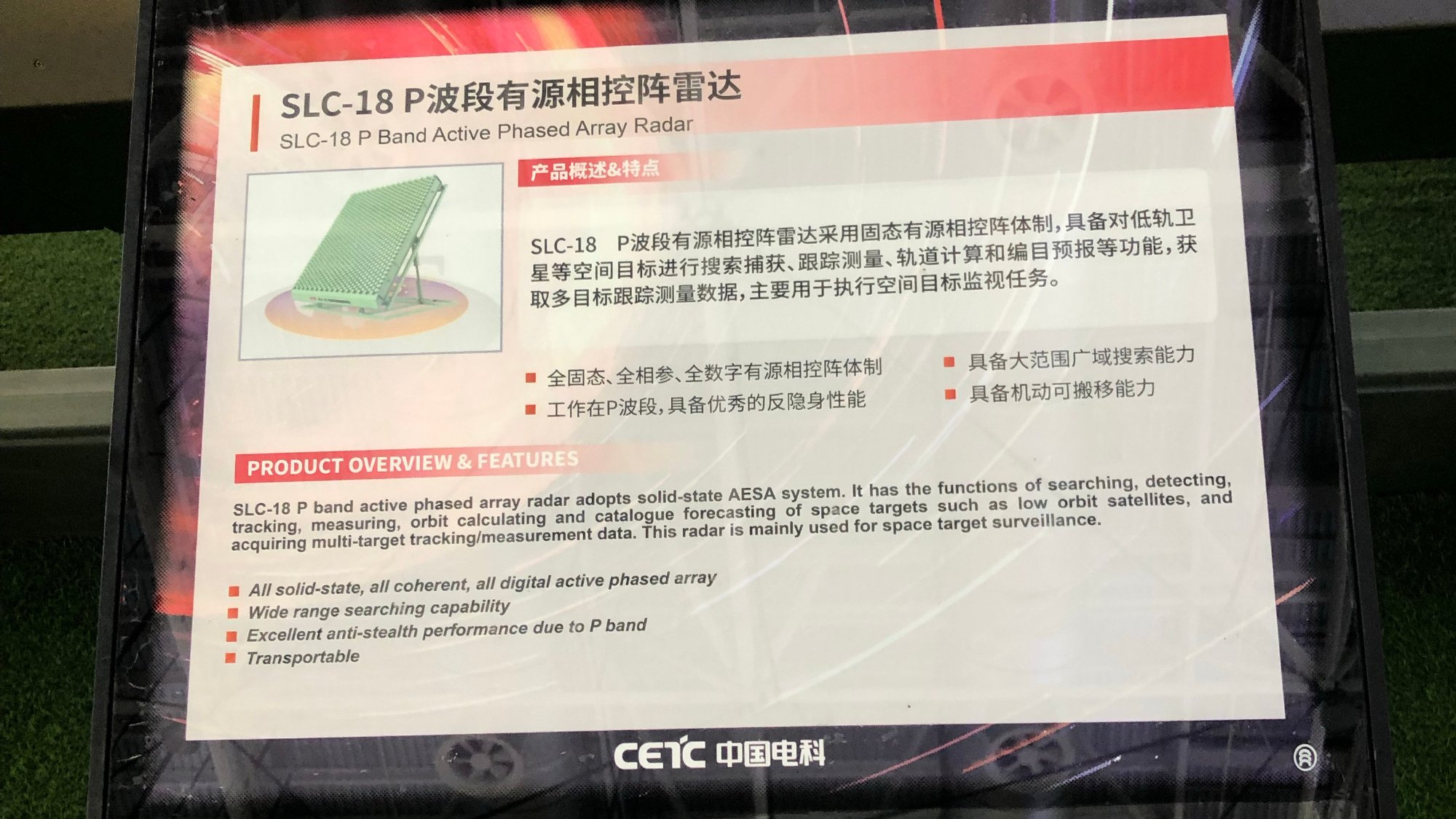China has unveiled the SLC-18 P band active phased array radar to target space threats at the ongoing Zhuhai Airshow.
The radar system quickly grabbed the attention of Chinese internet users on the Chinese microblogging website Weibo, with several netizens labeling it as an Anti-Starlink radar.
China Unveils ‘NGAD Rival’ 6th-Gen Fighter Concept; Military Expert Says Maiden Flight Possible By 2026
The radar is primarily designed for space target surveillance, and analysts believe it can target low earth orbit (LEO) satellites. LEO satellites orbit at a distance of 500 to 2,000 kilometers from the earth.
Several orbiting satellites in the LEO are critical for intelligence collection and battlefield surveillance. They have steadily become the mainstay of powerful countries’ remote intelligence-gathering capabilities.
SLC-18, le radar à antenne AESA en bande P, pour la détection des cibles furtives et aussi des cibles en orbite.
CETC à #ZhuhaiAirShow2022. pic.twitter.com/273NMWdzQ6
— East Pendulum (@HenriKenhmann) November 7, 2022
Therefore, nations worldwide are searching for effective weapons to disrupt the satellites of their adversaries. In line with this objective, the Chinese anti-satellite radar is specifically created to detect and track space threats.
The SLC-18P is arguably one of the most powerful radar systems on display at the ongoing air show.
The system reportedly employs a solid-state AESA system. It can perform search and acquisition, tracking measurement, orbit computation, cataloging, and forecasting of space targets such as low-orbit satellites.
The system is capable of acquiring multi-target tracking measurement data. Even though many Chinese netizens appear skeptical of the systems’ capabilities, others have warned Elon Musk’s Starlink satellites, saying, ‘Be careful, Starlink.’
Simply put, the creation of such radars reveals China’s military attention to the emerging space threats, notably those connected to Starlink.

The Chinese military strategists are increasingly concerned about the Starlink system, a network of low Earth orbit (LEO) satellites owned and managed by SpaceX, a commercial US aerospace corporation.
The US-supplied Starlink has already helped the Ukrainian forces eliminate many Russian military assets in the ongoing war. China may want to prevent a similar scenario if it attacks Taiwan.
During an invasion, China may disable GPS to impair Taiwanese navigation capabilities. However, under this scenario, Starlink satellites could locate any spot on the battlefield with an accuracy of eight meters.
Additionally, the expanding collaboration between SpaceX and the US military alarms the Chinese leadership. For instance, in 2020, SpaceX entered into a contract with the United States Department of Defense to build new technology based on the Starlink platform, including sensitive instruments capable of detecting and tracking hypersonic missiles.
These satellites might develop into a network of orbiting sensors that would give the US missile defense systems information on where to direct their missiles, thus deterring any missile attacks from China.
Elon Musk, the founder of SpaceX, is a popular figure in China. However, Musk and his firms came under fire after two Starlink satellites came perilously close to the Chinese space station in 2021.
Many Chinese military researchers expressed their reservations, arguing that the nation needs the capability to block or eliminate SpaceX’s Starlink satellites if they pose a danger to security.
Researchers calculated that a Starlink connection would enable US military drones and stealth fighter jets to enhance their data transmission speed by more than 100 times.
Given these worries, it makes sense that the Chinese defense sector is concentrating on developing such weapons.
The Technical Capabilities Of The Radar System
The 14th Research Institute of China Electronics Technology Group Corporation (CETC) developed the radar. The CETC is regarded as the pioneer of China’s national electronics and information sector, the originator of the country’s radar industry, and the creator of large-scale, novel, and advanced electronic equipment.
The radar utilizes a cutting-edge all-solid-state active phased array system and operates in a lower frequency band. It offers exceptional advantages like multi-target capability and an extensive search range.
The system can operate in all weather conditions. The SLC-18 is also reported to be capable of performing all-around surveillance of transit satellite targets and evaluating space targets owing to system design and appropriate station deployment.

Furthermore, satellite transit projections can be given in advance based on radar tracking data and target orbit determination, giving enough time for ground staff to conduct appropriate countermeasures.
Overall, the new radar system may help China achieve its goal of becoming a significant space power by strengthening its ability to counter the opponent’s satellite.
- Contact the author at ashishmichel@gmail.com
- Follow EurAsian Times on Google News




